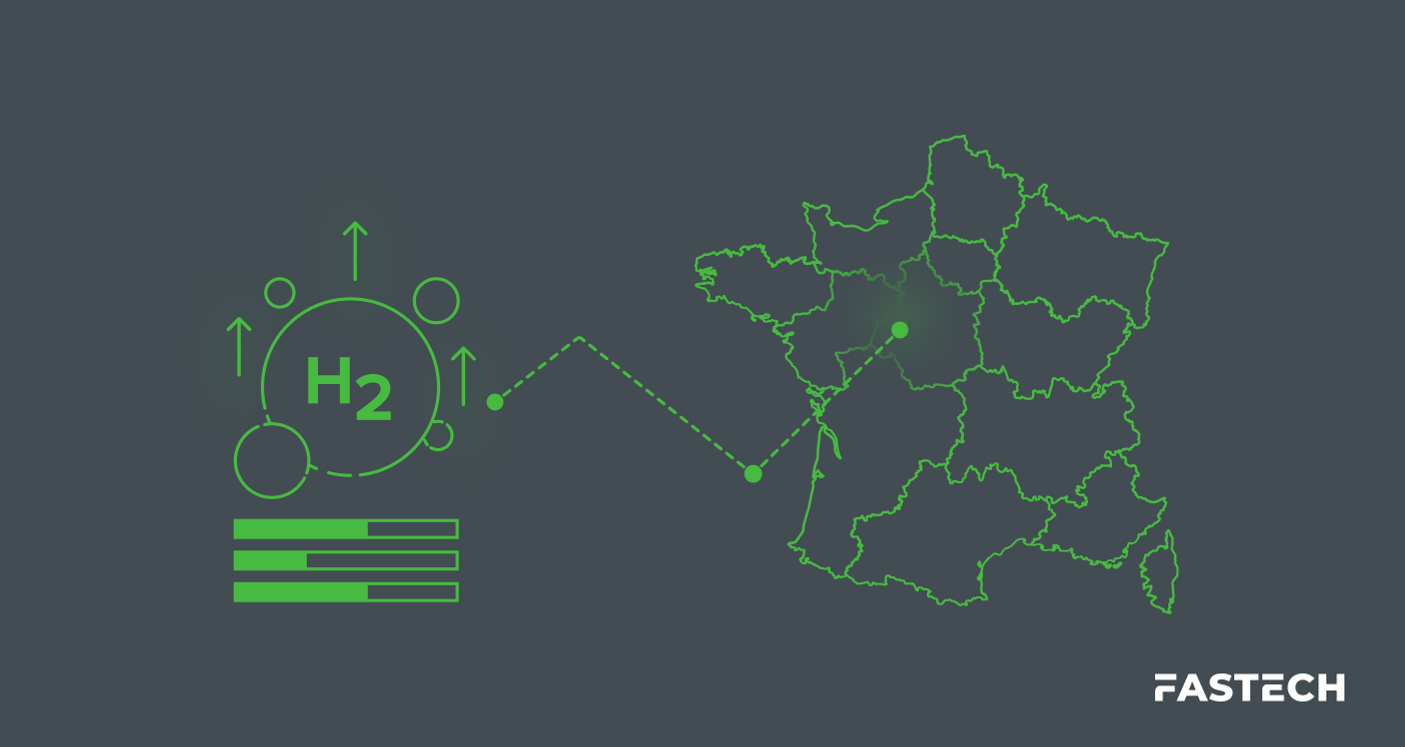Natural Hydrogen: A Gold Rush of Global Proportions

What if the fuel to sustainably power the world for generations lay hidden right beneath our feet? The idea may not be as far-fetched as it sounds. Recent discoveries point to a potential energy solutions game-changer: natural hydrogen.
Buried deep in the earth’s crust, this naturally occurring form of hydrogen has sparked a modern-day “gold rush” to explore and exploit this untapped resource. Only, rather than financial gain, this race is one to achieve net zero emissions by 2050.
The potential of natural hydrogen could revolutionize how we think about fuel and climate change, making it a cornerstone of discussions on sustainable energy solutions.
Understanding Natural Hydrogen
This subset of H2 is nothing new, yet the discovery that it is a naturally occurring resource has renewed interest in the topic.
So, what is natural hydrogen, and how does it form?
What is Natural Hydrogen?
Also fittingly known as “gold” hydrogen, natural hydrogen is the molecular H2 that naturally occurs in geological formations. This sets it apart from the industrially produced hydrogen created through energy-intensive methods like steam methane reforming, electrolysis, and water splitting.
Unlike these conventional methods, which can generate carbon emissions, natural hydrogen offers a cleaner and potentially more cost-effective alternative, as it exists naturally.
Formation and Occurrence
Natural hydrogen forms gradually through several geological processes:
- Serpentinization – Water reacts with iron-rich rocks, typically in oceanic crusts.
- Radiolysis – Radioactive decay breaks down water molecules within certain rocks.
- Cataclasis – Hydrogen naturally generates in fault zones due to rock disruption.
These processes allow hydrogen to accumulate in various geological settings, waiting to be discovered.
Perhaps the most famous example of natural hydrogen comes from the village of Bourakébougou in Mali, which has been entirely powered by the local natural hydrogen reserve since 2012. Further explorations in Europe, Africa, Brazil, and the US continue to reveal promising deposits.
The Global Interest in Natural Hydrogen
Climate change has revived interest in alternative fuels. What role does natural hydrogen play? And why is attention only now accelerating?
Why the Rush?
Net-zero goals, which intend to decarbonize worldwide emissions by 2050, are the primary driver behind this sudden surge of interest in natural hydrogen. Coupled with technological advancements in detection and extraction, accessing natural hydrogen reserves has become more feasible than ever before.
The Role of Natural Hydrogen in the Energy Transition
As nations strive to fulfill sustainable energy commitments, natural hydrogen could play a central role. Certain projections estimate that hydrogen demands will increase sixfold in a net-zero scenario. The ability to harvest rather than manufacture it could be the key to meeting future demand in a sustainable, cost-efficient manner.
Potential Benefits of Natural Hydrogen
In a sense, natural hydrogen serves as the clean energy equivalent of other harvestable resources, like oil or natural gas. Consider how naturally occurring hydrogen brings multiple impactful benefits:
- Abundant and sustainable – Natural hydrogen could very well be a virtually limitless source of clean energy. The US Geological Survey suggests enormous global deposits, far exceeding current hydrogen consumption rates. If these estimates prove true, natural hydrogen could provide a sustainable energy source for generations to come.
- Cost-effectiveness – Natural hydrogen also stands out for its economic viability. While “green” hydrogen production remains costly at $5 per kilogram, natural hydrogen promises to cut that to as little as 50 cents, making clean energy more accessible.
- Low environmental impact – Natural hydrogen production is inherently cleaner than conventional methods, which often emit significant amounts of CO2. Extraction could be minimally invasive, thereby conserving vital resources and minimizing ecological disruption.
Together, these factors position natural hydrogen as an environmentally friendly alternative with the potential for widespread use in a low-carbon future.
Challenges in Harnessing Natural Hydrogen
Despite its potential, several challenges must be overcome to harness natural hydrogen effectively. Let’s look at just a few.
Technological and Logistical Barriers
The primary obstacle in utilizing natural hydrogen lies in the advanced technology required for efficient extraction and storage. Hydrogen’s notoriously low density means a single kilogram occupies roughly the same space as a compact car. The need for pressurized tanks or liquefaction adds substantial costs, complicating transportation logistics.
Market Readiness and Infrastructure
Another barrier lies in hydrogen infrastructure, much of which is still in its infancy. A global hydrogen economy will require significant investment, including:
- Transportation networks
- Storage facilities
- Distribution systems
- Pipelines and refueling stations
These infrastructural needs have historically slowed hydrogen adoption in general, and will similarly impact natural hydrogen.
Environmental and Safety Concerns
By itself, natural hydrogen is one of the cleanest fuel sources. The concerns, once again, lie in extraction and storage:
- Leakage – As the smallest molecule—and an invisible, flammable one at that—hydrogen storage solutions will need to ensure proper safety measures.
- Impact on subsurface ecosystems – Hydrogen formation is just one of many complex, interconnected chemical reactions. Extraction could potentially affect microbial communities that depend on it.
- Geological effects – The impact of long-term and large-scale hydrogen extraction efforts on geological stability is not yet fully understood.
Further study is needed to ensure that extraction and storage can be carried out safely and sustainably, in the truest sense of the word.
Global Players in the Natural Hydrogen Race
The past few years have seen a significant uptick in natural hydrogen exploration. Leading the charge are regions rich with the raw materials for serpentinization and radiolysis, such as South Australia’s extensive iron and uranium deposits.
Similar hotspots exist across Europe, the US, and other regions, with several groups driving the industry forward:
- The US Geological Survey (USGS) – Pioneering the North American natural hydrogen landscape by surveying geophysical data to find potential areas of interest.
- Hydroma – A Mali-based oil company that turned to hydrogen after founding the world’s first hydrogen production facility.
- Gold Hydrogen – An aptly named company in the Australian hydrogen boom, already at work drilling and exploring sites of interest.
The “gold rush” is ramping up, and many more groups and initiatives are anticipated to join as the natural hydrogen race accelerates.
The Future of Natural Hydrogen in the Energy Landscape
While the potential of natural hydrogen is exciting, experts remain cautiously optimistic. Natural hydrogen could be the key to meeting global clean energy demands, especially given its abundance and continuous regeneration.
However, realizing this potential hinges on breakthroughs in several key areas:
- Sensing technologies – Improved methods for detecting and quantifying natural hydrogen are crucial for identifying viable reserves.
- Extraction methods – Environmentally sensitive extraction methods need development to tap into diverse geological formations efficiently.
- Hydrogen infrastructure – Enhanced pipelines and storage solutions are essential for managing hydrogen safely and effectively at large scales.
Addressing these challenges will be critical in integrating natural hydrogen into our energy future.
FASTECH’s Role in Supporting Hydrogen Development
As a leader in end-to-end renewable energy solutions, FASTECH is strongly positioned to support the development of natural hydrogen infrastructure and projects. With extensive experience in designing and constructing energy facilities, we excel at:
- Hydrogen refueling stations – Developing sophisticated systems for hydrogen refueling, crucial for the broader adoption of hydrogen-powered vehicles.
- Storage and distribution systems – Developing safe and efficient systems for storing and transporting hydrogen.
- Integration with existing infrastructure – Helping to adapt current energy systems to incorporate hydrogen.
The hydrogen economy is set for exponential growth, and FASTECH is committed to embracing this emerging resource.
Going for Gold: Natural Hydrogen as the Future of Clean Energy
Like the glitter of gold itself, the potential of this clean energy source captivates global attention.
As nations worldwide strive to reduce carbon emissions and embrace renewable resources, natural hydrogen stands out as a groundbreaking solution. And while challenges remain in infrastructural and technological development, the potential benefits are too great to ignore.
That’s why FASTECH is dedicated to delivering end-to-end solutions for engineering, procurement, construction, and maintenance. The modern-day gold rush of the renewable energy sector is poised to swing into full force, and we’re leading the charge.
Reach out to FASTECH today to learn how we can help kickstart your hydrogen-powered journey.




